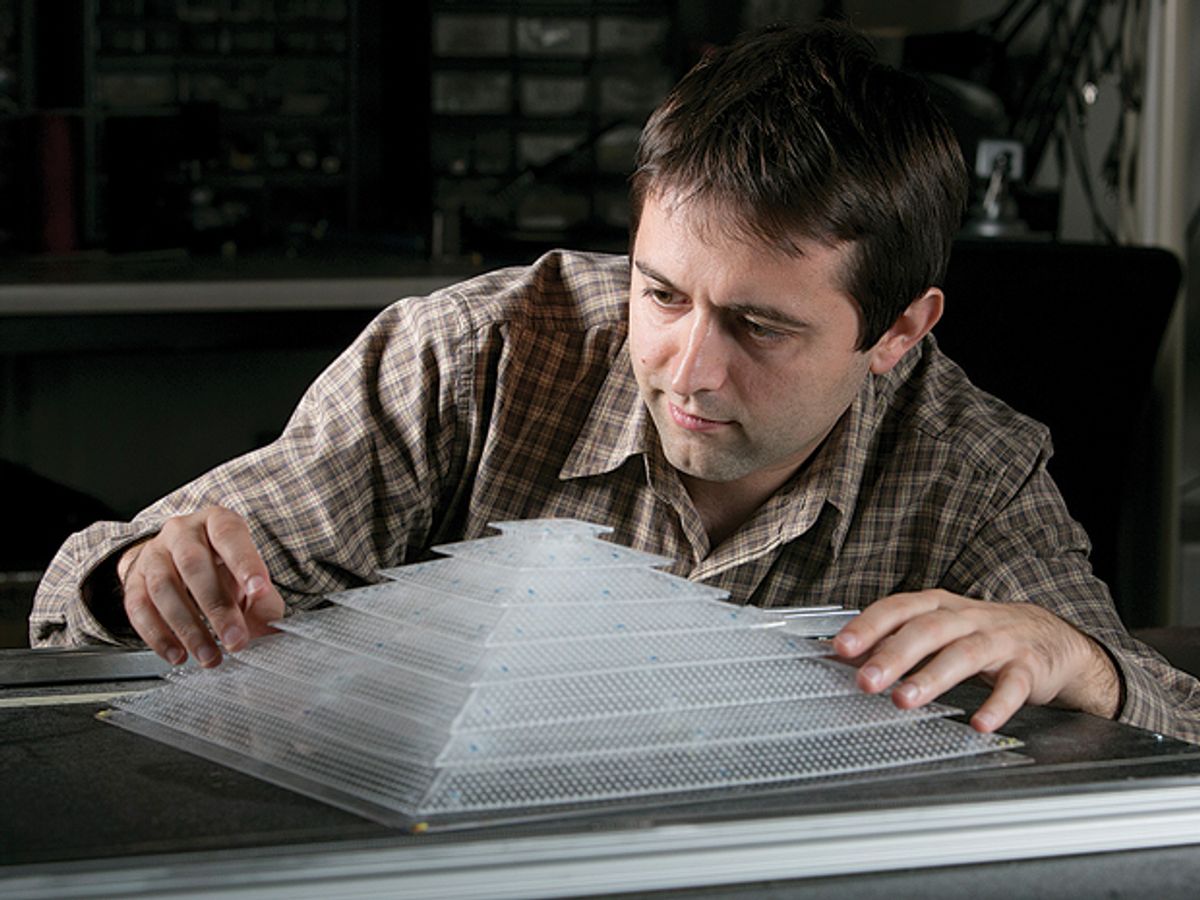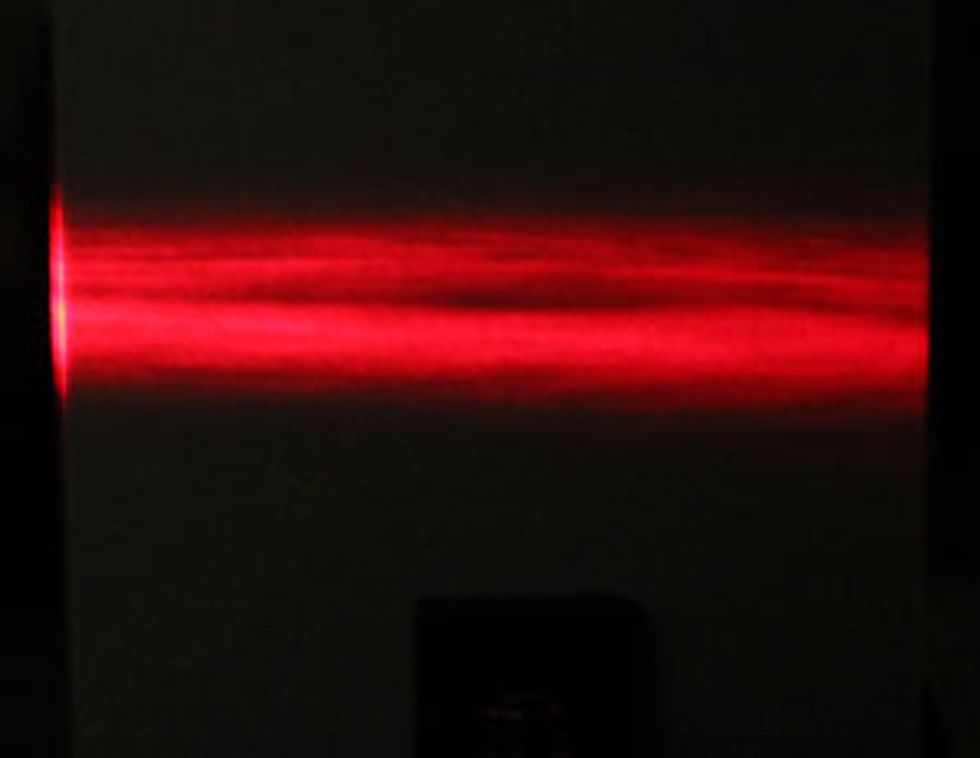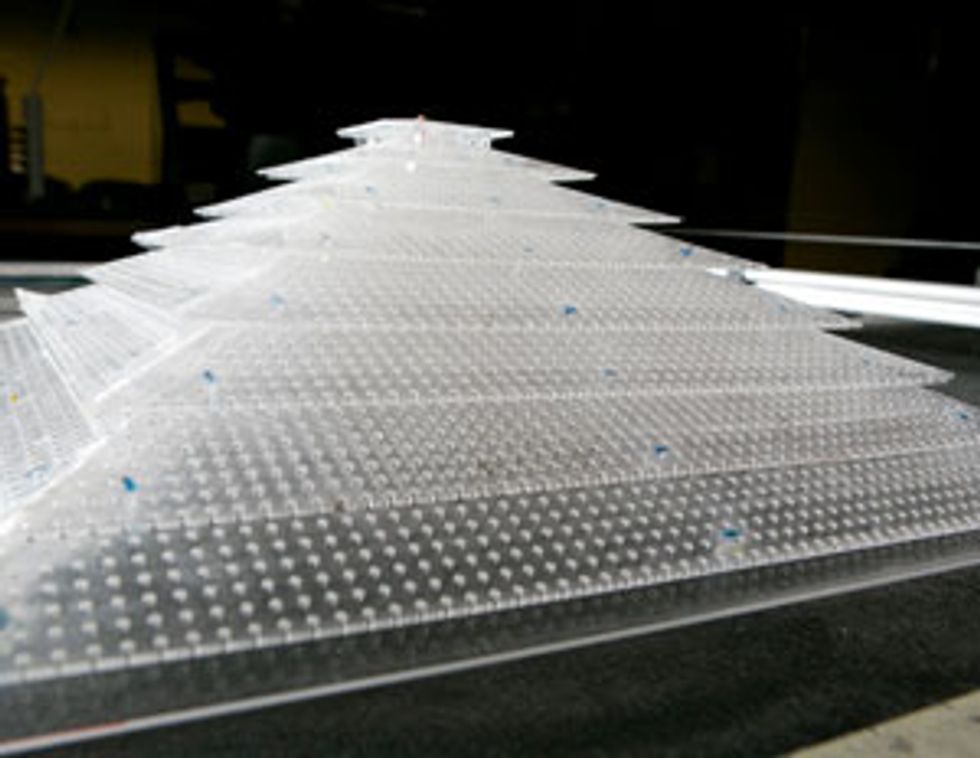In 2006, scientists at Duke University captured the world’s imagination by announcing they had created an invisibility cloak. It could hide an object only from a particular wavelength in the microwave region, and only when viewed from certain directions, but it sparked waves of research along with countless cracks about boy wizards and Romulan warbirds. You still can’t hide a spaceship, but that hasn’t stopped scientists from coming up with new and strange ways to make small objects undetectable, and the past few months have produced particularly unusual innovations.
Invisibility is accomplished using metamaterials, which feature structures that are substantially smaller than the wavelengths of light. For instance, an early metamaterial, described in 2008 by Xiang Zhang, a professor of mechanical engineering at the University of California, Berkeley, consisted of 30-nanometer-thick layers of silver interwoven in a fishnet pattern with 50-nm-thick layers of magnesium fluoride. The right arrangement of structures gives the material a negative index of refraction, allowing it to bend light of a particular wavelength in directions it would not normally bend. With careful engineering, the idea goes, you could route the light around an object and let it continue on as if the object weren’t there.
Since the original work, researchers have found methods to cover wider bands of wavelengths and make objects invisible from a wider field of view. They’ve even developed cloaks to hide things at visible wavelengths, although the hidden objects tend to be just a few millimeters wide. Zhang says that in theory it’s possible to build cloaks for any sort of wave, including sound waves and heat waves. In practice, while there have been plenty of advancements in the last half dozen years, there are still a lot of problems to be solved. “You can make cloaks. The question is, can you scale them up?” Zhang says. He believes invisibility will eventually be possible, but, he says, “I wouldn’t say how long it will take. It’s not an easy task.” Here are three new ways that researchers are using to make objects invisible.
Photo: University of Buffalo
1. Hiding in a Hole
While most approaches to making an object invisible entail building something to hide the object, Natalia Litchinitser, associate professor of electrical engineering at the State University of New York at Buffalo, proposes structuring the light itself in such a way that it misses the object and then continues on unchanged. In her experiment, she shot a beam of light from a laser and expanded it so it had a diameter of 10 millimeters. Then she passed it through a spiral phase plate, which wound the beam into a helical structure, like the coils of a spring. She passed the beam over a thin metal rod, as if she were slipping the spring over a nail, and then through another phase plate, which returned the beam to its original shape. Because the rod rested in the empty space in the middle of the beam, it wasn’t visible. Of course, the object to be hidden has to fit into the relatively small hole in the light beam, and it works only if the beam passes in the right direction. But Litchinitser says her approach might be combined with more conventional metamaterial approaches to improve the performance of both.
Photo: Duke University
2. Cone of Silence
Instead of light, Steven Cummer, a professor of electrical and computer engineering at Duke University, designs his metamaterials to manipulate sound waves. Sonar “sees” an object by measuring distortions in the reflected sound waves that bounce off it. To hide an object from sonar, the metamaterial must be designed so that sound bounces off it in the same pattern it would if it were being reflected by the surface beneath it. In his experiment, Cummer wanted to hide a small plastic pyramid, so he built a cloaking pyramid to cover it. He built this undetectable pyramid out of air-filled cubes of acrylic and used a laser cutter to perforate acrylic plates within each cube with 850-micrometer-wide holes. Each unit of this periodic structure is about 1/20th the size of the wavelength of the 3-kilohertz sound used by the detector. The researchers pinged their cloak from many different angles to make sure it worked in 3-D space. Though the experimental results weren’t perfect, the cloak did manage to mostly mask the plastic pyramid beneath it.
Photo: National University of Singapore
3. Hidden Heat
One way to camouflage an object is to hide its heat signature. Cheng-Wei Qiu, assistant professor of electrical and computer engineering, and his colleagues at the National University of Singapore have come up with a thermal cloak that masks how heat scatters off an object. They use a bilayer cloak with different levels of conductivity in each layer. The inner layer in this case is silicone, which is an insulator. The outer layer is copper, which of course is highly conductive. The combination causes heat to flow differently around the hidden object than it normally would. Instead of producing one thermal signature where the object is, there are now scattered signatures at different locations. To complete the illusion, Qiu places other objects at the locations of these “ghost” heat signatures, so the scene appears ordinary. Qiu calls the hidden object—really a copper cylinder—a “man” and the ghost objects, which are insulators, “women.” With the cloak in place, the man vanishes among the women.
Neil Savage is a freelance science and technology writer based in Lowell, Mass., and a frequent contributor to IEEE Spectrum. His topics of interest include photonics, physics, computing, materials science, and semiconductors. His most recent article, “Tiny Satellites Could Distribute Quantum Keys,” describes an experiment in which cryptographic keys were distributed from satellites released from the International Space Station. He serves on the steering committee of New England Science Writers.

 Photo: University of Buffalo
Photo: University of Buffalo Photo: Duke University
Photo: Duke University Photo: National University of
Photo: National University of 

